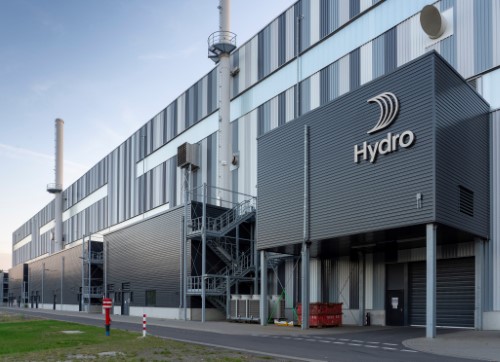The article was first published by Livewire Markets on 7 March, 2022.
Even before a hot war broke out in Europe, commodities of all kinds were facing supply and demand challenges in what is a “perfect storm” for global energy. This includes aluminium, whose production methods and sustainability credentials are under the microscope as the world progresses toward a carbon-free future.
There’s still no such thing as “green” aluminium – but it’s rapidly heading that way, with newer production methods more environmentally sustainable than ever before. A global company at the forefront of this is Norwegian company Norsk Hydro, whose fully-integrated operations also include the production of raw materials bauxite and alumina.
Norsk Hydro has been a holding of Antipodes since 2019.
“Back then we identified Hydro as a market leader in the green aluminium space, which was underappreciated by the market. While the market has woken up to Hydro in recent months it’s well-positioned for the low-carbon world we are moving into, and is still valued at a reasonable discount to the replacement cost of its very unique assets” says Alison Savas.
In a recent podcast interview with Antipodes portfolio manager Alison Savas, Norsk Hydro’s chief financial officer Pal Kildemo spoke about the competitive landscape, the company’s business model, and how it’s positioned for the future.
Market dynamics
Closely aligned with global GDP, aluminium prices are currently at 11-year highs of around US$3600, up from between $1500 and $2000 in recent years. More recently, prices spiked further as Russia invaded Ukraine. But even before this, Europe was facing pressures as aluminium supplies were crunched by a lack of natural gas, poor weather and far higher power demands from the post-COVID economic recovery than were anticipated.
“In the short term, players that are exposed to spot electricity are really in a tough place now,” says Kildemo.
“We expect markets will balance a bit as we’re able to refill the underlying gas inventories and the like. But then you get new macroeconomic uncertainties like the Russia-Ukraine conflict, which could deteriorate this picture again. So, it is a challenging balancing act on the power side now.”
And China presents another challenge. Historically it was a net importer of aluminium, but the combination of China’s increasing production capacity and its government-led push to hit new environmental targets is shaking up the industry.
“Now we see production capacity being halted, production capacity being forced to close down if licences aren’t in place, environmental targets enforced and also communicated ambition to be carbon neutral by 2060,” says Kildemo.
On the environmental front, the production process of aluminium is undergoing a dramatic shift, from one that was traditionally coal-intensive toward new “greener” production. This is a key to Norsk Hydro’s entire business, which uses hydroelectricity rather than coal to produce aluminium.
As Kildemo explains, the average aluminium producer emits around 16 or 17 tonnes of carbon dioxide per tonne of produced aluminium. By comparison, Norsk Hydro emits around 4 tonnes – or less – of CO2 per tonne of aluminium. Environmental considerations are rapidly becoming a differentiator, which is something Kildemo believes the company is ideally placed to capitalise on.
“We’re heavily focused on new technologies to produce carbon-free aluminium. Another reason we’re positive on this is that consumers are willing to pay an extra premium for greener products, as we’ve seen in recent years,” Kildemo says.
Where is aluminium used?
The transport and construction sectors are the two largest consumers of aluminium, alongside packaging, electrical, consumer durables and industrial machinery and equipment.
In automotive, some of the largest users of aluminium include the likes of BMW, Mercedes and Peugeot, which all use Norsk Hydro aluminium.
Considerations about carbon intensity are increasingly weighing on corporate decision-making within these industries.
In addition to the regulatory changes being introduced in various countries, including the implementation of carbon taxes, consumers are also increasingly prepared to pay a premium for cleaner products.
Kildemo points out three pathways to low and zero-carbon in aluminium production:
- Recycled or “post-consumer” aluminium scrap. Using 100% recycled scrap together with hydrogen instead of gas in the recycling process.
- At the smelting stage, HalZero technology is a carbon-free process that uses chlorine instead of carbon.
- Also in smelting, carbon capture can be implemented in existing aluminium smelters.
“We define our aluminium metal operations as sustain and improve. Maintain the position on the cost curve, provide greener aluminium,” he says.
“And then if we see that we are able to break through on the low or near zero carbon aluminium production, then we will consider if we should start reinvesting in production of aluminium again.”
What’s the outlook for aluminium?
Most commodity analysts expect the market to remain tight for the next few years, but from 2025 onward see an undersupply of aluminium.
“Moving beyond this period, if you don’t get more capacity coming in, even with the increased amount of recycling and producers digging deeper and deeper into the scrap pile, this can extend even further,” says Kildemo.
“Compared to a couple of years ago, the general outlook now is for tighter markets for the coming years, unless we have some form of a demand shock.”
The future for Norsk Hydro
Citing a range of factors, including “self-improvements” that have ensured its costs have remained relatively low, ongoing demand strength, and greater emphasis on environmental sustainability, Kildemo believes Nork Hydro’s future looks bright.
“Many of the biggest milestones related to us succeeding in many of the sustainability ambitions we’ve set. Being able to produce zero-emission products within the timeframe that we’ve set is something we’re really looking forward to.”
Subscribe to receive the latest news and insights from the Antipodes team

